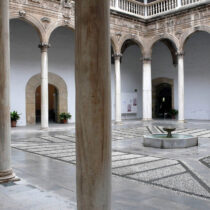The history of the Sciences and Technology Museums begins at the late sixteenth century with the “galleries of curiosities” and continues in the seventeenth century with the institution of the Ashmolean Museum in Oxford, which presents the scientific and technological achievements in an encyclopedic way. Since the mid-twentieth century, the era of the skyrocketing development of mass media, the emphasis has been shifted and laid up on systematic education. The new approach to thematic exhibitions ascribes the displayed object to a program with a multidimensional meaning-message, such as artifact and society, process of scientific thought, need for protection and preservation. The fixed objective is the communication of knowledge and the means of achieving it are the new museographic applications, such as the advanced audiovisual media and the transeffective systems that help the museum visitor to undergo a personal experience and to form a critical opinion.
Sciences and Technology Museums
29 Aug 2012
by Archaeology Newsroom
- A
- A
- A

